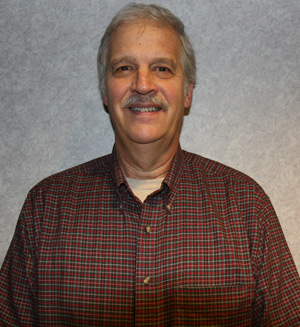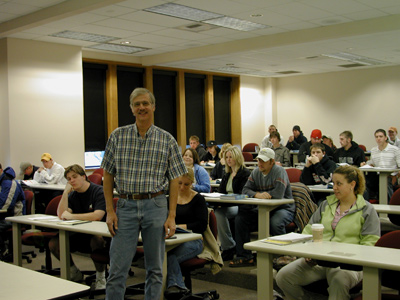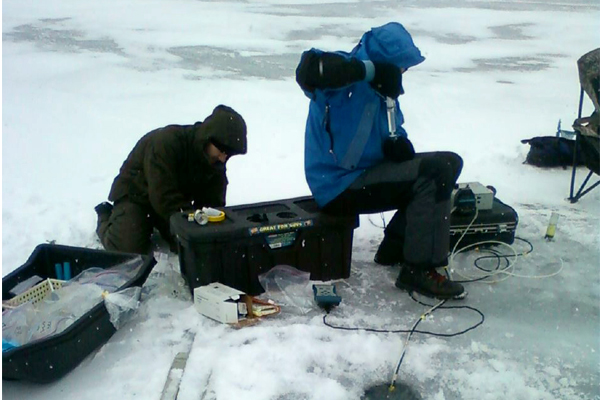Steve Parker - Department of Chemistry and Geochemistry
 Professor Emeritus of Environmental Chemistry
Professor Emeritus of Environmental Chemistry
B.A., Chemistry, Hope College
M.S., Biochemistry, Indiana University
Ph.D., Environmental Chemistry, The University of Montana
Academic activities & Courses Taught
Chmy 141 and 143 – College Chemistry I & II: This course is designed to introduce the student to the fundamental principles of chemistry such as thermodynamics, chemical kinetics, and chemical equilibria for acid/base, precipitation and redox reactions. These courses are required for most science and engineering majors.
Chmy 442/540 – Environmental Chemistry: This course utilizes physical and chemical principles to provide a detailed understanding of the chemistry of natural waters and terrestrial systems including how these areas interact with the environment (formerly Water Chemistry).
Chmy 430/542 – Environmental Organic Chemistry: This course is intended to provide a molecular and thermodynamic understanding of how and why organic compounds move and distribute in the environment.
Chmy 491/595 – Geochemical Modeling: This course uses a number of computer and spreadsheet based techniques to model a variety of problems of geochemical importance.
Research Interests
I am part of a small but dedicated research collaboration investigating various aspects of riverine and groundwater biogeochemistry. The following are some of the current active areas of research:- Causes and occurrences of diel (24-h) processes in pH neutral to alkaline streams and how these processes influence daily changes in the concentration of trace metals and arsenic. We are specifically focusing on sediment (biofilm) – water interactions of metals such as Mn2+, Zn2+ Cu2+ and others.
- Investigations of the mechanisms controlling metals transport and diel processes in acidic streams affected by acid rock drainage or natural geothermal waters. This work has been done in mining impacted streams in Montana as well as Rio Tinto, Spain and Rio Agrio, Argentina.
- Use of stable isotopes (18O and 13C) of dissolved oxygen, dissolved inorganic carbon and dissolved organic carbon as tracers of processes affecting carbon cycling in streams. The use of stable isotopes is powerful tool to investigate diel processes but the quantitative relationships are not well understood.
- Investigations of the mechanisms controlling dissolved oxygen depletion in groundwater systems using stable isotopes – biotic vs. abiotic. This is a relatively new area of work but as groundwater resources become more important we need to better understand the fundamental science of the process acting on these reservoirs.
- Recent investigations have followed the occurrence, movement and sources of organic wastewater chemicals in groundwater in the Butte Summit Valley. This project has been in collaboration with the Montana Bureau of Mines and Geology.
- Seasonally ice-covered lakes in temperate environments have unique geochemical and microbiological structures during winter. Our research collaboration is investigating the linkages between under-ice chemical/physical conditions with depth to the microbiological communities at Georgetown Lake near Phillipsburg, MT.
Recent publications
Parker, S.R., Darvis, M.N., Poulson, S.R., Gammons, C.H., Stanford, J.A. (2014) Dissolved oxygen and dissolved inorganic carbon stable isotope composition and concentration fluxes across several shallow floodplain aquifers and in a diffusion experiment. Biogeochemistry, 117, 539-552, DOI 10.1007/s10533-013-9899-0.
Gammons, C.H., Henne, W., Poulson, S.R., Parker, S. R., Johnston, T.B., Dore, J.S., Boyd, E.S. (2014) Stable Isotopes Track Biogeochemical Processes under Ice Cover in a Shallow, Eutrophic Lake. Biogeochemistry. 120, 359-379.
Gammons, C.H., Nimick, D.A., Parker, S.R. (2014) Diel Cycling of Trace Elements in Streams Draining Mineralized Areas—A Review. Applied Geochemistry 283, 3-17, DOI: http://dx.doi.org/10.1016/j.apgeochem.2014.05.008
Parker, Stephen R., Christopher H. Gammons, M. Garrett Smith, Simon R. Poulson (2012) Behavior of stable isotopes of dissolved oxygen, dissolved inorganic carbon and nitrate in groundwater at a former wood treatment facility containing hydrocarbon contamination. Applied Geochemistry, 27, 1101-1110, doi:10.1016/j.apgeochem.2012.02.035.
Smith, M. Garrett, Stephen R. Parker, Christopher H. Gammons, Simon R. Poulson, F. Richard Hauer (2011) Tracing dissolved O2 and dissolved inorganic carbon stable isotope dynamics in the Nyack aquifer: Middle Fork Flathead River, Montana, USA. Geochim. Cosmochim. Acta. 75, 5971-5986, doi:10.1016/j.gca.2011.07.033.
Nimick, David A., Christopher H. Gammons, and Stephen R. Parker, (2011) Diel Biogeochemical Processes and Their Effect on the Aqueous Chemistry of Streams: A Review. Chemical Geology, 283, 3-17, doi: 10.1016/j.chemgeo.2010.08.017.
Gammons, Christopher H., John N. Babcock, Stephen R. Parker, Simon R. Poulson, (2011) Diel cycling and stable isotopes of dissolved oxygen, dissolved inorganic carbon, and nitrogenous species in a stream receiving treated municipal sewage. Chemical Geology, 283, 44-55, doi: 10.1016/j.chemgeo.2010.07.006.
Parker, S. R., Gammons, C. H., Poulson, S. R., Weyer, C. L., Smith, M. G., Babcock, J. N., Oba, Y., (2010) “Diel behavior of stable isotopes (18-O & 13-C) of dissolved oxygen and dissolved inorganic carbon in Montana, USA rivers, and in a mesocosm experiment”, Chemical Geology, 269, 22-32, doi:10.1016/j.chemgeo.2009.06.016.
Parker, S. R., Poulson, S. R., Weyer, C. L., Smith, M. G., Bates, K. N., (2010) “Temporal variability in the concentration and stable carbon isotope composition of dissolved inorganic and organic carbon in streams”, Aquatic Geochemistry, 16, 61-84, doi 10.1007/s10498-009-9068-1.
Parker, S.R., Gammons, C. H., Pedrozo, F.L., Wood S. A., (2008) Diel changes in metal concentrations in a geogenically acidic river: Rio Agrio, Argentina. J. Volcanology & Geothermal Research, 178, 213-232. doi:10.1016/j.jvolgeores.2008.06.029.


